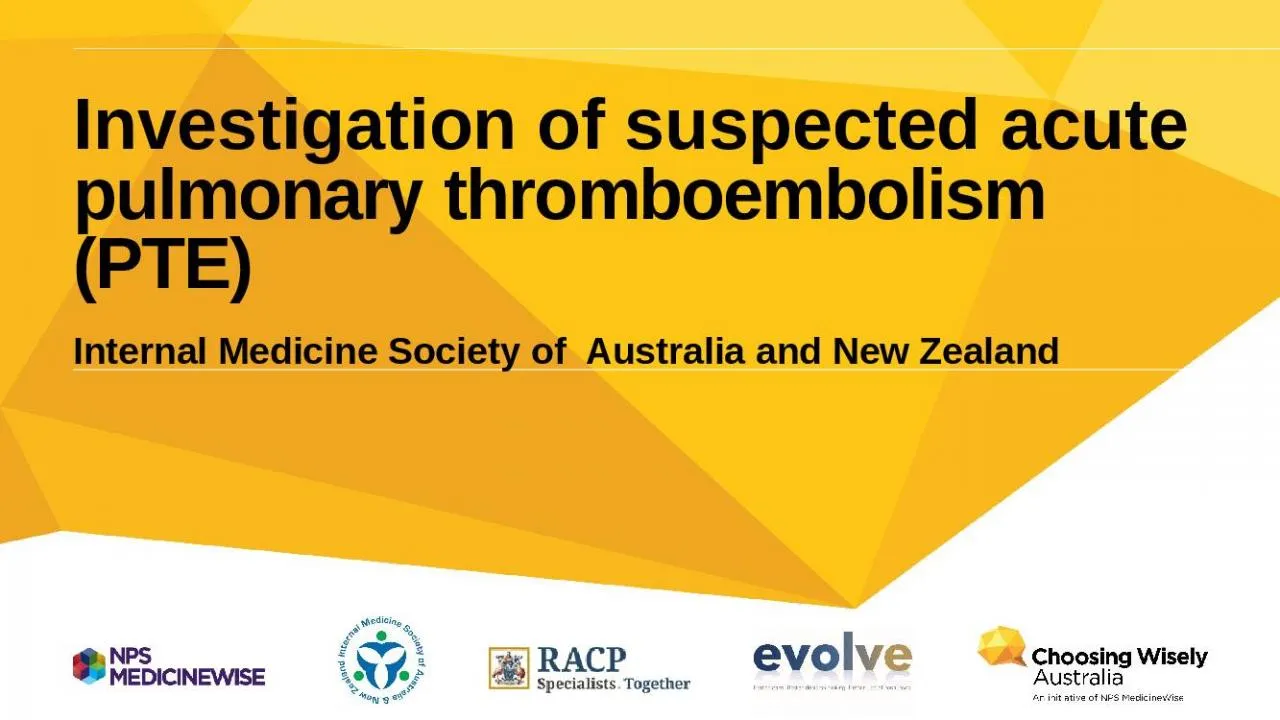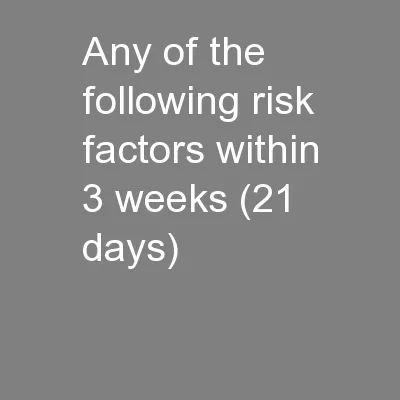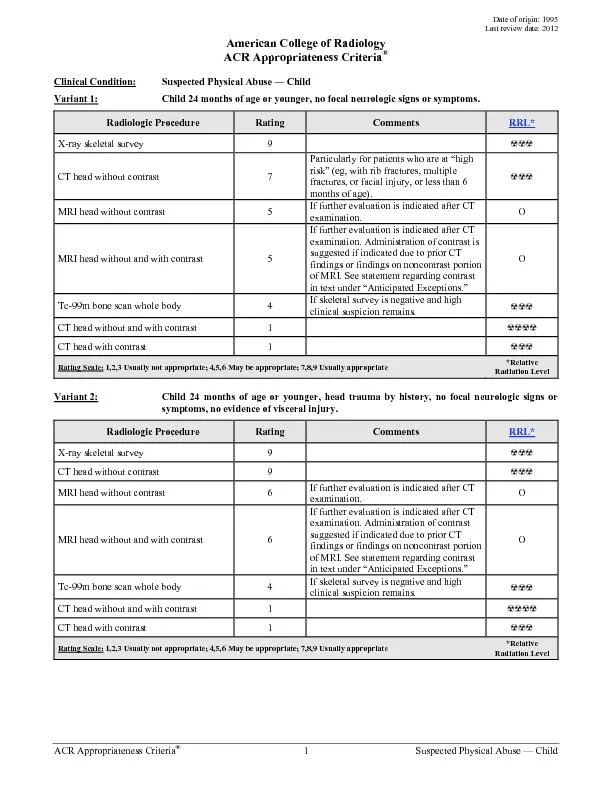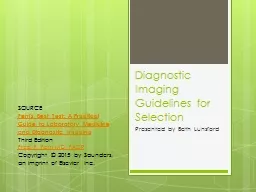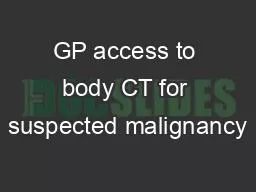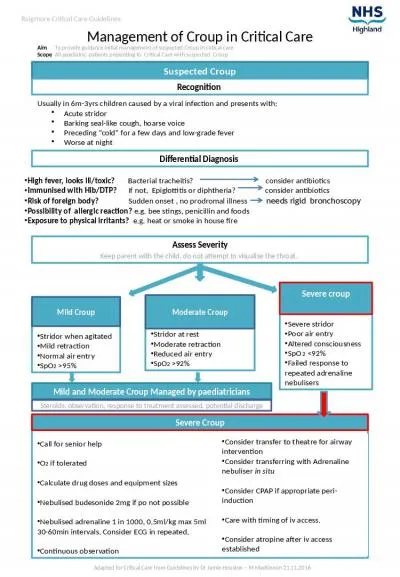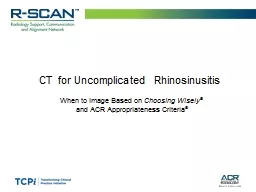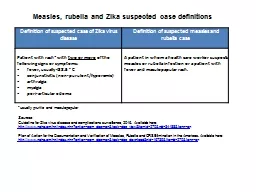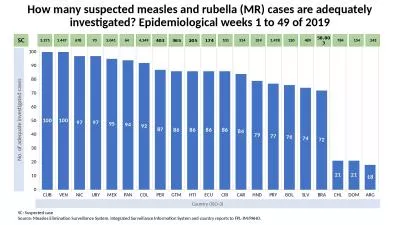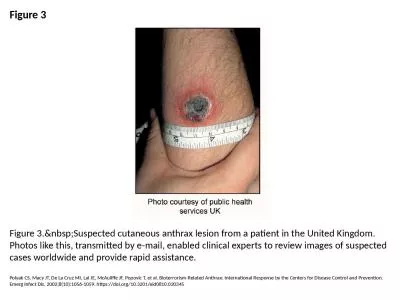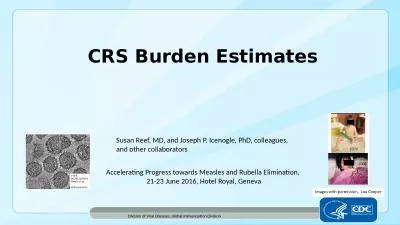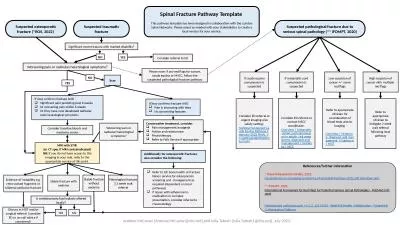PPT-Investigation of suspected acute
Author : audrey | Published Date : 2022-05-18
pulmonary thromboembolism PTE Internal Medicine Society of Australia and New Zealand Hugh Patient medical history PMHx 48 year old male plumber exsmoker 1 pack
Presentation Embed Code
Download Presentation
Download Presentation The PPT/PDF document "Investigation of suspected acute" is the property of its rightful owner. Permission is granted to download and print the materials on this website for personal, non-commercial use only, and to display it on your personal computer provided you do not modify the materials and that you retain all copyright notices contained in the materials. By downloading content from our website, you accept the terms of this agreement.
Investigation of suspected acute: Transcript
Download Rules Of Document
"Investigation of suspected acute"The content belongs to its owner. You may download and print it for personal use, without modification, and keep all copyright notices. By downloading, you agree to these terms.
Related Documents

